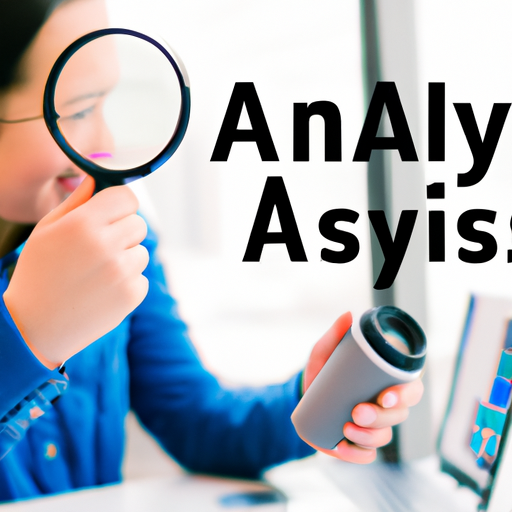How Do IT Services Approach The Internet Of Behaviors (IoB)?
Imagine a world where technology not only understands your actions but also predicts your next move. This is the concept behind the Internet of Behaviors (IoB), an emerging trend in the realm of IT services. IoB aims to harness data from various sources to provide a deeper understanding of human behavior and preferences. In this article, we will explore how IT services are embracing IoB and the potential implications it holds for businesses and individuals alike. So, fasten your seatbelt and get ready to embark on an exciting journey into the world of IoB with IT services.
Data Collection
Utilizing various data sources
When it comes to the Internet of Behaviors (IoB), IT services approach data collection by utilizing various sources. This includes both structured and unstructured data from multiple channels such as social media platforms, websites, mobile apps, wearables, and IoT devices. By tapping into these diverse sources, IT services can gather a wealth of information about user behavior, preferences, and interactions.
Implementing data analytics tools
To make sense of the collected data, IT services employ advanced data analytics tools. These tools help in gathering, managing, and analyzing large volumes of data efficiently. With the help of algorithms, machine learning, and artificial intelligence, IT services can derive meaningful insights from the data. This allows organizations to understand user behavior patterns, trends, and correlations that can be used to drive strategic decision-making and improve business outcomes.
Leveraging IoT devices and sensors
The Internet of Things (IoT) plays a crucial role in IoB data collection. IT services leverage IoT devices and sensors to gather real-time data about user behavior. These devices collect vast amounts of information such as location data, biometrics, environmental data, and user interactions with various devices and objects. By harnessing this data, IT services can gain a deeper understanding of user preferences, habits, and contextual information, enabling them to provide personalized experiences and targeted interventions.
Data Storage
Cloud storage solutions
IT services rely on cloud storage solutions to securely store and manage the vast amounts of data collected for IoB. Cloud storage provides scalability, accessibility, and cost-effectiveness, allowing organizations to store large volumes of data without investing in on-premises infrastructure. Additionally, cloud storage ensures data availability and enables real-time analysis, enabling organizations to make quick and informed decisions based on up-to-date information.
Data encryption and security measures
Data security is of paramount importance in the world of IoB. IT services implement robust encryption and security measures to protect the data collected from various sources. This includes encrypting data both in transit and at rest, implementing access controls, and using secure communication protocols. By prioritizing data security, IT services ensure that sensitive user information remains protected from unauthorized access and potential breaches.
Data backup and disaster recovery
As data plays a critical role in IoB, IT services prioritize data backup and disaster recovery strategies. Regular backups of the collected data are performed to avoid data loss in the event of hardware failures, natural disasters, or cyber incidents. Additionally, disaster recovery plans are put in place to ensure that data can be quickly restored and operations can resume in case of any unforeseen events. By implementing robust backup and disaster recovery mechanisms, IT services minimize the risk of data loss and ensure business continuity.
Data Integration
Integrating data from multiple sources
In the IoB landscape, IT services focus on integrating data from multiple sources to gain a comprehensive view of user behavior. This involves consolidating structured and unstructured data from various channels and systems into a single unified format. Integration is achieved through the use of data integration platforms and technologies that enable seamless data flow and data transformation processes. By successfully integrating data, organizations can eliminate data silos and gain a holistic understanding of user behavior across different touchpoints.
Creating a centralized data repository
To streamline data management and analysis, IT services create a centralized data repository. This repository serves as a single source of truth for all IoB-related data and facilitates easy access, sharing, and collaboration. By having a centralized repository, organizations can effectively manage data governance and data quality processes, ensuring data accuracy, consistency, and compliance. Additionally, a centralized repository enables faster and more efficient data analysis, allowing organizations to derive actionable insights.
Implementing data governance and data quality processes
To ensure the reliability and accuracy of the collected data, IT services implement data governance and data quality processes. Data governance involves defining and enforcing policies, rules, and standards for data management, ensuring data privacy and compliance with regulations. Data quality processes focus on ensuring the accuracy, completeness, consistency, and integrity of the data. By implementing these processes, IT services can maintain data integrity and make informed decisions based on high-quality data.
Data Analysis
Applying advanced analytics techniques
To derive actionable insights from the collected data, IT services employ advanced analytics techniques. This includes descriptive analytics, predictive analytics, and prescriptive analytics. Descriptive analytics help in understanding past user behavior and identifying trends and patterns. Predictive analytics utilizes statistical models and machine learning algorithms to forecast future behavior and make predictions. Prescriptive analytics goes a step further by providing recommendations and guiding decision-making based on the analysis of historical and real-time data.
Extracting meaningful insights
IT services focus on extracting meaningful insights from the analyzed data. This involves identifying key drivers and factors that influence user behavior. By uncovering these insights, organizations can understand customer preferences, pain points, and motivations. This understanding enables them to tailor their products, services, and experiences to better meet the needs and expectations of their target audience. Extracting meaningful insights also helps organizations identify opportunities for business growth and optimization.
Identifying behavioral patterns and trends
IT services analyze the collected data to identify behavioral patterns and trends. By leveraging data mining techniques, statistical analysis, and machine learning algorithms, IT services can uncover hidden relationships and correlations within the data. This allows them to identify recurring behavioral patterns, understand user preferences, and predict future actions. By identifying these patterns and trends, organizations can proactively respond to changing user behavior, customize experiences, and implement targeted behavior-changing interventions.
Behavioral Profiling
Creating individual and group profiles
IT services create individual and group profiles based on the analyzed data. Individual profiles capture the unique characteristics, preferences, and behaviors of each user. Group profiles, on the other hand, aggregate data from multiple users with similar characteristics or behaviors. These profiles help organizations segment their audience, understand their diverse needs, and tailor experiences accordingly. By creating comprehensive profiles, IT services can effectively personalize experiences, deliver relevant content, and influence user behavior.
Monitoring user behaviors in real-time
Real-time monitoring of user behaviors is a crucial aspect of IoB. IT services leverage real-time data streams to monitor and track user interactions, preferences, and actions as they occur. This enables organizations to gain immediate insights into user behavior, identify anomalies or deviations from typical patterns, and take timely actions. Real-time monitoring is especially valuable in situations where immediate interventions or personalized recommendations are required, such as in e-commerce settings or health monitoring applications.
Predicting future behaviors
Based on the historical and real-time data analyzed, IT services can predict future behaviors. By applying machine learning algorithms and predictive models, organizations can forecast user actions, preferences, and needs. These predictions help organizations anticipate user behavior and take proactive measures. For example, predictive models can be used to identify potential churners, recommend personalized products or services, or design marketing campaigns that are likely to resonate with specific user segments. Predicting future behaviors enables organizations to stay ahead of the curve and deliver tailored experiences.
Personalization Strategies
Delivering tailored user experiences
Personalization is a key strategy adopted by IT services in the realm of IoB. By leveraging the analyzed data and user profiles, organizations can deliver tailored user experiences. This includes customizing content, recommendations, offers, and user interfaces to match individual user preferences and needs. Personalization enhances user engagement, satisfaction, and loyalty by providing relevant and meaningful experiences. Organizations that effectively implement personalization strategies can create competitive advantages and drive business growth.
Utilizing personalized recommendations
IT services utilize personalized recommendations as part of their personalization strategies. By analyzing user behavior, preferences, and past interactions, organizations can generate personalized recommendations for products, services, content, or actions. These recommendations are based on user similarities, past purchases, browsing history, and other relevant factors. By offering tailored recommendations, organizations can enhance user engagement, increase conversion rates, and promote cross-selling or upselling opportunities. Personalized recommendations serve as valuable guidance for users, reducing decision fatigue and enhancing satisfaction.
Optimizing marketing campaigns
IT services leverage IoB data to optimize marketing campaigns. By understanding user behavior patterns, preferences, and responses to previous campaigns, organizations can design and execute targeted marketing strategies. With the help of advanced analytics, organizations can segment their audience, craft personalized messages, and choose the most effective marketing channels. Moreover, by monitoring user responses and analyzing campaign outcomes, organizations can continuously refine and optimize their marketing efforts. By leveraging IoB insights, organizations can maximize the effectiveness of their marketing campaigns and achieve better ROI.
Ethical Considerations
Respecting user privacy rights
IT services recognize the importance of respecting user privacy rights in the context of IoB. Organizations acknowledge the sensitivity of the data collected and stored and take measures to ensure that user privacy is protected. This includes obtaining explicit consent from users for data collection and processing, providing transparent privacy policies, and giving users control over their data. Respecting user privacy rights builds trust and fosters positive user experiences while ensuring compliance with data protection regulations.
Obtaining user consent
Obtaining user consent is a crucial ethical consideration in IoB. IT services prioritize obtaining explicit consent from users before collecting, analyzing, or using their personal data. Consent is obtained through clear and easily understandable consent mechanisms, such as opt-in checkboxes or user agreements. Organizations also ensure that users are informed about the purpose of data collection, how their data will be used, and their rights regarding their data. By obtaining user consent, organizations ensure that users are actively involved in the data collection process, empowering them to make informed decisions about their data privacy.
Ensuring data security and compliance
Data security and compliance are paramount ethical considerations in IoB. IT services implement stringent security measures to protect the collected data from unauthorized access, breaches, or misuse. This includes implementing encryption, access controls, and data anonymization techniques. Organizations also invest in regular security audits, vulnerability assessments, and ongoing monitoring to maintain data security. Additionally, IT services ensure compliance with relevant data protection regulations such as GDPR, CCPA, and other regional or industry-specific standards. By prioritizing data security and compliance, organizations demonstrate their commitment to ethical practices and safeguarding user rights.
Behavior Influencing Techniques
Designing persuasive user interfaces
Behavior influencing techniques are employed by IT services to nudge users towards desired behaviors. One such technique is designing persuasive user interfaces that leverage principles of behavioral psychology to steer user actions. This includes employing visual cues, persuasive messaging, and interactive elements that encourage users to take specific actions. For example, incorporating social proof elements, such as displaying the number of users who have already taken a desired action, can create a sense of conformity and influence user behavior. By carefully designing user interfaces, organizations can guide users towards desired behaviors without resorting to manipulation.
Implementing behavioral interventions
IT services implement behavioral interventions to promote positive behavior change. These interventions utilize psychological principles to influence user actions and habits. For instance, employing gamification techniques, such as rewarding users with points or badges for achieving certain milestones, can motivate and incentivize desired behaviors. Behavioral interventions can be implemented through personalized notifications, reminders, or alerts that encourage users to engage in specific actions. By employing these techniques, IT services can promote behavior change in areas such as health and wellness, productivity, or sustainability.
Using nudges to guide user behavior
Nudges are subtle prompts or suggestions that aim to guide user behavior in a particular direction. IT services leverage nudges to influence user actions without restricting freedom of choice. For instance, sending personalized notifications that gently remind users to complete tasks or offering time-limited incentives to encourage purchasing decisions are examples of nudges. Nudges are designed to tap into cognitive biases and heuristics to make behaviors more likely, such as using default options or simplifying decision-making processes. By implementing effective nudges, IT services can positively impact user behavior and drive desired outcomes.
Regulatory Compliance
Navigating data privacy regulations
Navigating data privacy regulations is crucial for IT services in the IoB landscape. Organizations must stay updated and comply with relevant regulations such as the General Data Protection Regulation (GDPR) in the European Union, the California Consumer Privacy Act (CCPA), and other regional or industry-specific data protection laws. Compliance involves understanding the legal requirements, securing user consent, implementing necessary security measures, and ensuring transparency in data processing practices. Organizations that prioritize regulatory compliance not only protect user rights but also avoid legal repercussions and reputational damage.
Ensuring compliance with GDPR, CCPA, etc.
To ensure compliance with data privacy regulations, IT services take specific actions to protect user data. This includes implementing mechanisms for obtaining user consent, providing transparent privacy policies, and allowing users to exercise their data rights. Organizations also establish procedures for responding to user data requests, such as data access, rectification, or erasure. IT services take steps to protect the privacy and security of user data by implementing technical and organizational measures and conducting regular privacy impact assessments. By ensuring compliance with GDPR, CCPA, and other regulations, organizations demonstrate their commitment to data privacy and responsible data handling.
Implementing necessary safeguards
Implementing necessary safeguards is an essential aspect of regulatory compliance for IT services. These safeguards involve adopting technical and organizational measures to protect user data. Encryption is widely used to secure data both at rest and in transit. Access controls, authentication mechanisms, and user permission settings are implemented to restrict unauthorized access to data. IT services also conduct regular security audits, vulnerability assessments, and penetration testing to identify and address potential vulnerabilities. By implementing these safeguards, organizations ensure the confidentiality, integrity, and availability of user data and fulfill their regulatory obligations.
Conclusion
In conclusion, IT services approach the Internet of Behaviors (IoB) by leveraging various data collection sources, implementing advanced analytics tools, and utilizing IoT devices and sensors. They focus on data storage through cloud solutions, encryption, security measures, data backup, and disaster recovery. Data integration involves consolidating data from multiple sources, creating a centralized repository, and implementing data governance and quality processes. IT services analyze the data to derive meaningful insights, identify behavioral patterns and trends, and create individual and group profiles. They use these insights to develop personalization strategies, optimize marketing campaigns, and influence user behavior through design techniques, behavioral interventions, and nudges. Ethical considerations such as respecting user privacy rights, obtaining user consent, and ensuring data security and compliance are crucial in the IoB landscape. Lastly, IT services navigate data privacy regulations, ensure compliance with GDPR, CCPA, and other regulations, and implement necessary safeguards to protect user data. Overall, IT services play a vital role in harnessing the power of IoB to drive personalized experiences, optimize business strategies, and maintain ethical practices in the digital era.








